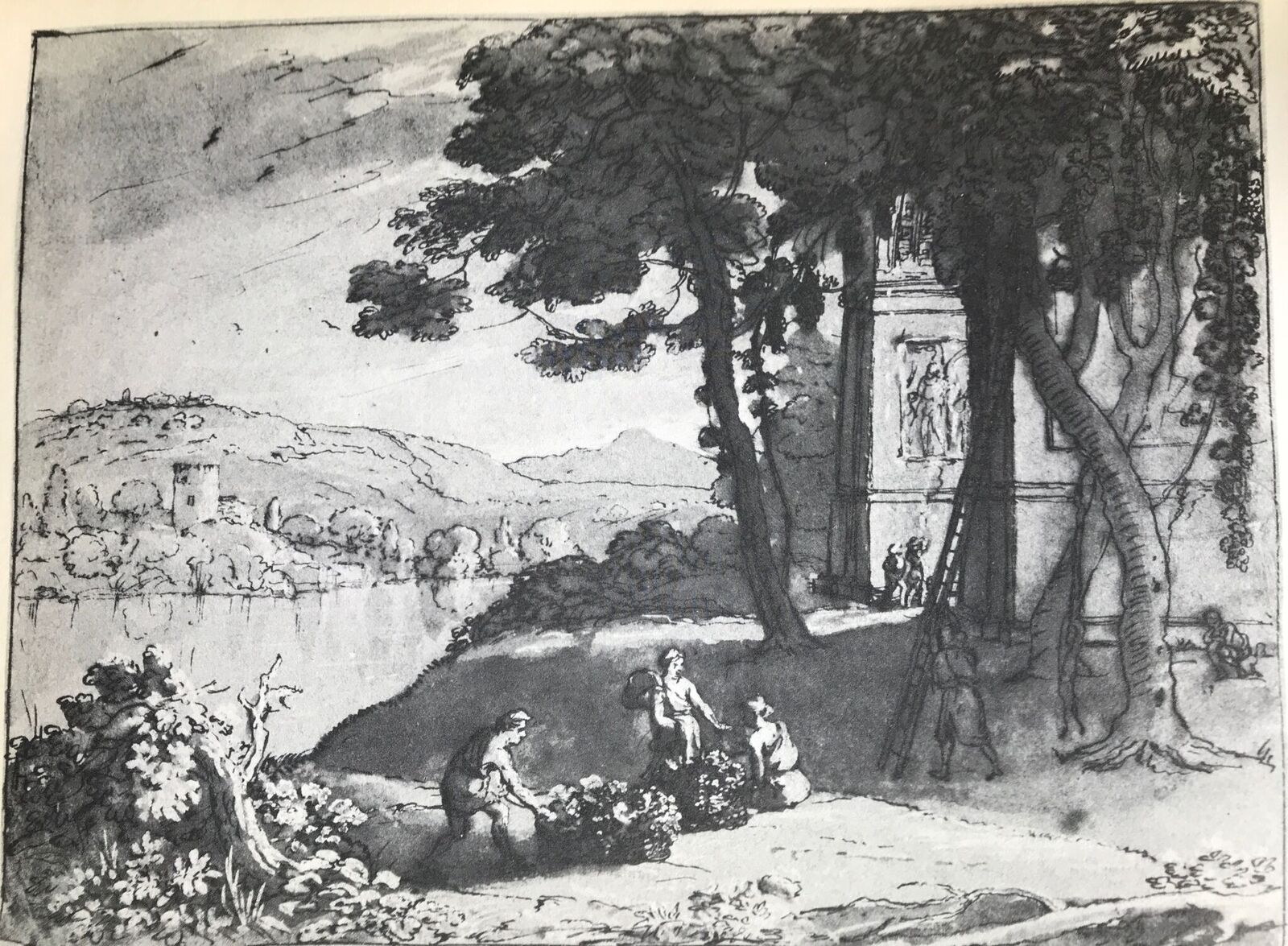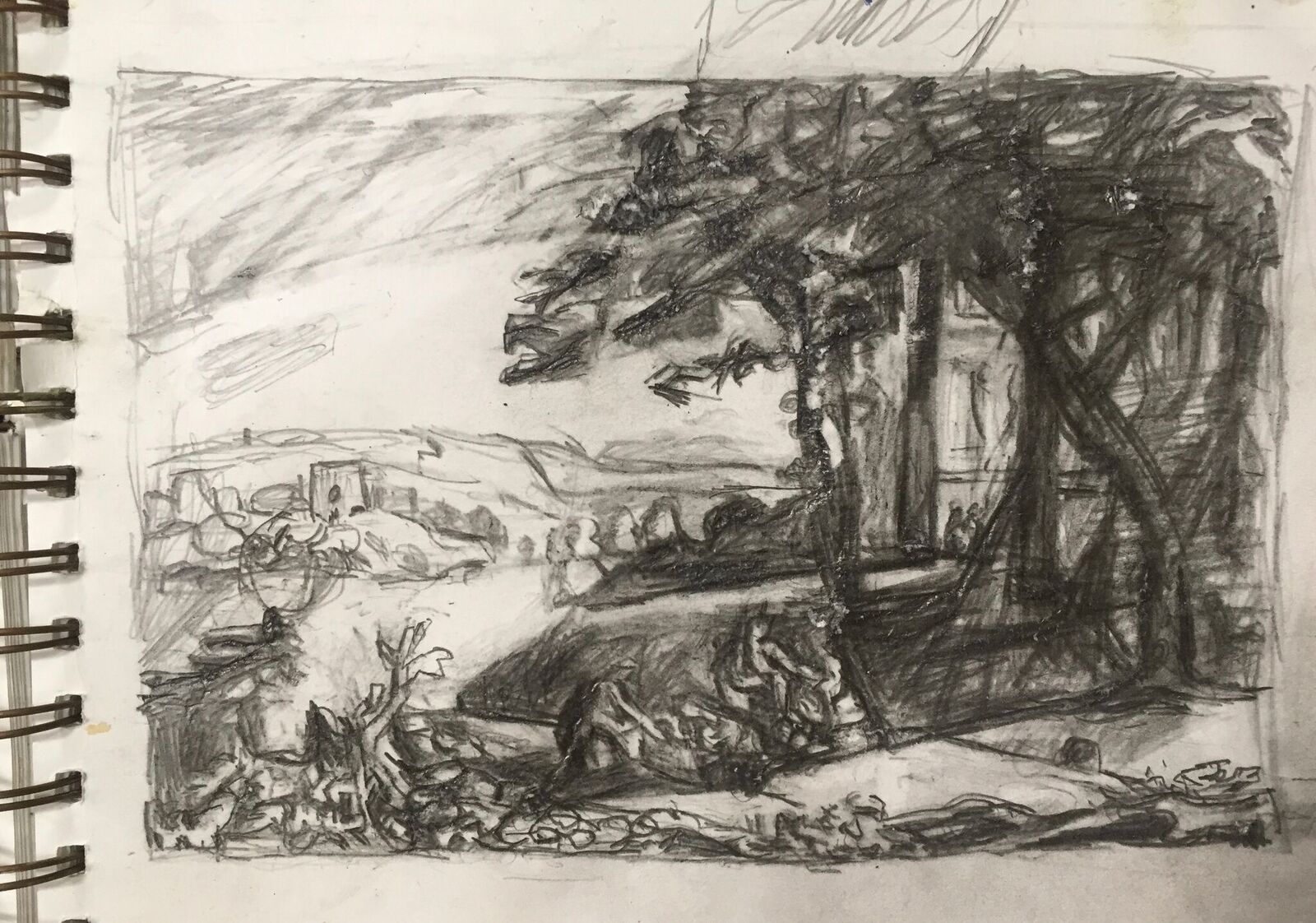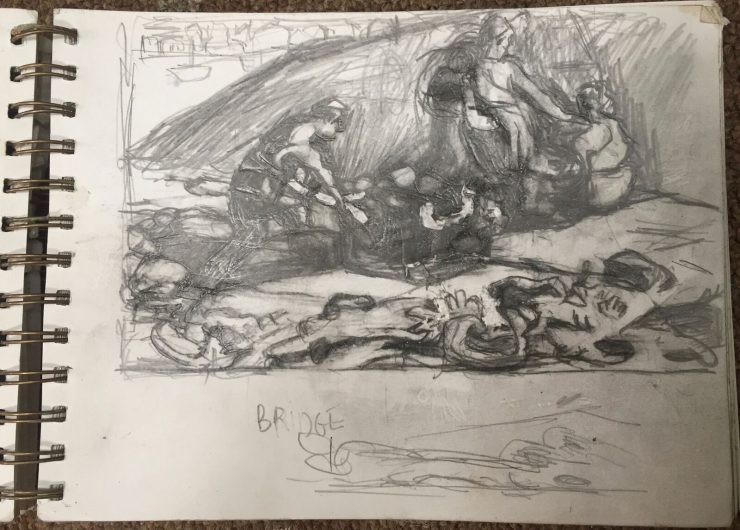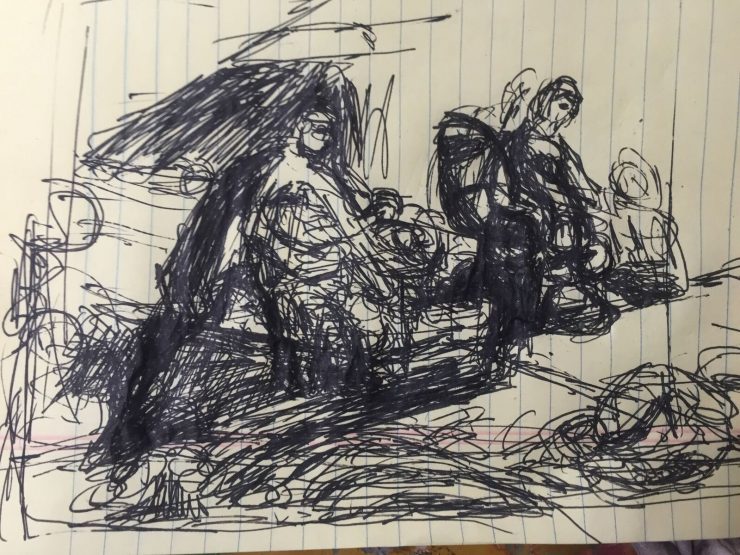How do we acquire the vocabulary necessary for creating a satisfying picture? And once we begin to recognize the many elements of our visual experience how in the world do we organize it all. How do we figure out what element to employ, and where and when? How do we learn how to use light/dark or figure/ground to make a world that holds together and engages? These are real painting questions that for me were brought up in a recent lecture at WCSU by visiting artist Stanley Lewis.

Lewis set out to talk about some of the works from the “Liber Veritatis” a book of drawings made by Claude Lorraine that records his completed paintings. He spoke about the amazing precision and cogency of each mark and described his experience drawing from Claude’s copies, how the experience of drawing opened up new spaces and awareness of mysterious and previously unseen details.

He talked about how every piece of the drawing was almost a world into itself, a moving undulating part of a beautiful, complex and balanced whole. This was and is the visual language that I and others of my generation aspire to, that drove me to study and fall in love with painting. And to copy is the most direct way to learn the nuances of visual language.
Lewis pointed out how what may look at the outset “boring” or predictable, (Claude’s pastoral landscapes), are in fact a complete and mysterious world that opens up on exploration. The meanings of tension, rhythm, or Hoffman’s push/pull are all here. How figure transforms into ground or a flat vertical plane opens up and lies down to create a distant space, or, how scale transforms our notion of where we are, this is the language of creating space and light that has a long and meaningful tradition.
And quite wonderfully it is available to any student of art who chooses to explore its subtleties through copying and an astonishing experience to all who take the time to look.



Enjoyed drawings and that last painted sketch has such clarity and essential beauty . Enjoyed your writing too. Thanks for sharing.
Hello, how wonderful to see these images and read your comments and notes. Was a recording made of Stanley’s talk/lecture? I would love to share with my drawing students? All the Best, and thank you again for the post. Ty Smith